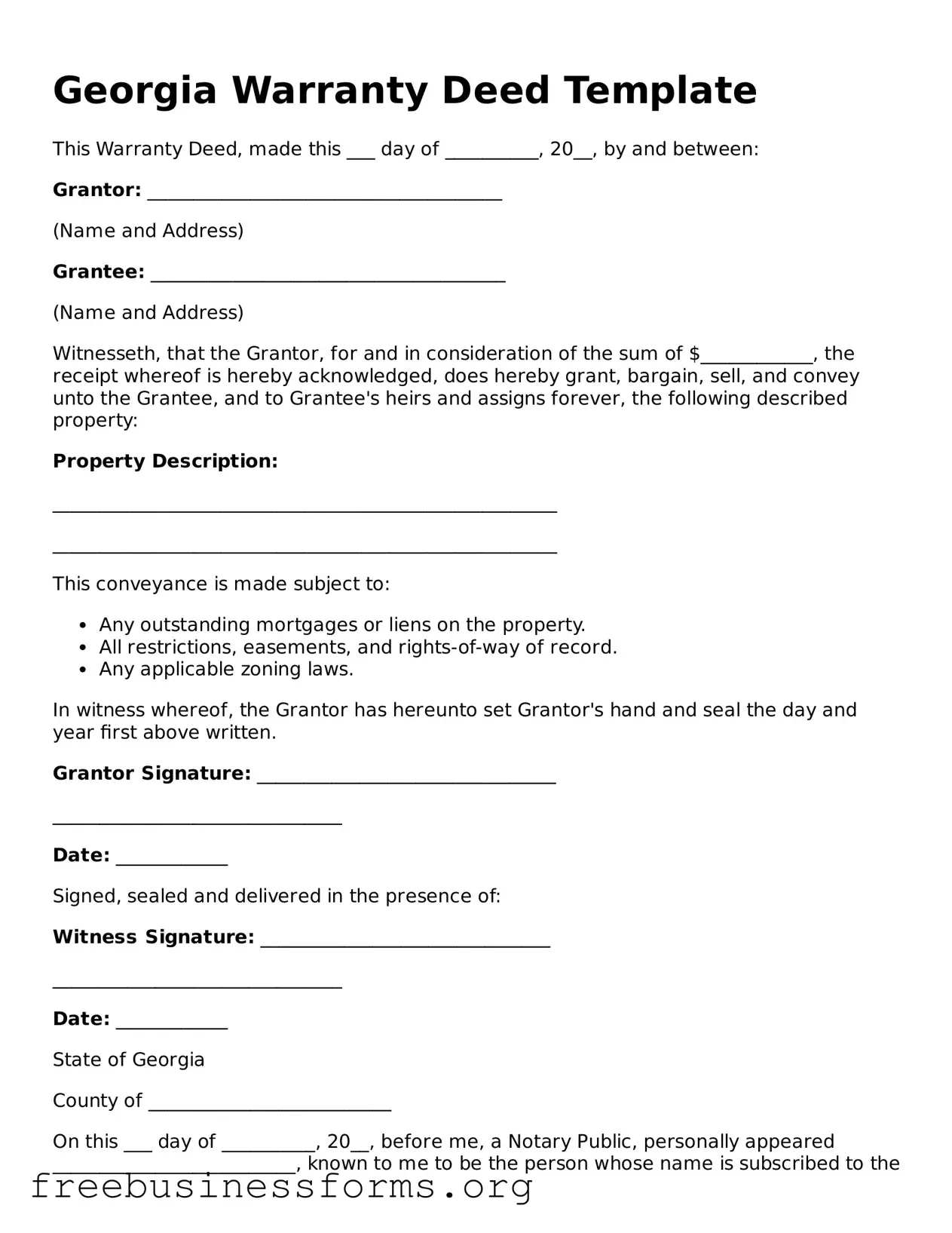Georgia Warranty Deed Template
This Warranty Deed, made this ___ day of __________, 20__, by and between:
Grantor: ______________________________________
(Name and Address)
Grantee: ______________________________________
(Name and Address)
Witnesseth, that the Grantor, for and in consideration of the sum of $____________, the receipt whereof is hereby acknowledged, does hereby grant, bargain, sell, and convey unto the Grantee, and to Grantee's heirs and assigns forever, the following described property:
Property Description:
______________________________________________________
______________________________________________________
This conveyance is made subject to:
- Any outstanding mortgages or liens on the property.
- All restrictions, easements, and rights-of-way of record.
- Any applicable zoning laws.
In witness whereof, the Grantor has hereunto set Grantor's hand and seal the day and year first above written.
Grantor Signature: ________________________________
_______________________________
Date: ____________
Signed, sealed and delivered in the presence of:
Witness Signature: _______________________________
_______________________________
Date: ____________
State of Georgia
County of __________________________
On this ___ day of __________, 20__, before me, a Notary Public, personally appeared __________________________, known to me to be the person whose name is subscribed to the within instrument, and acknowledged that he/she executed the same for the purposes therein contained.
Notary Public Signature: __________________________
My commission expires: ____________
